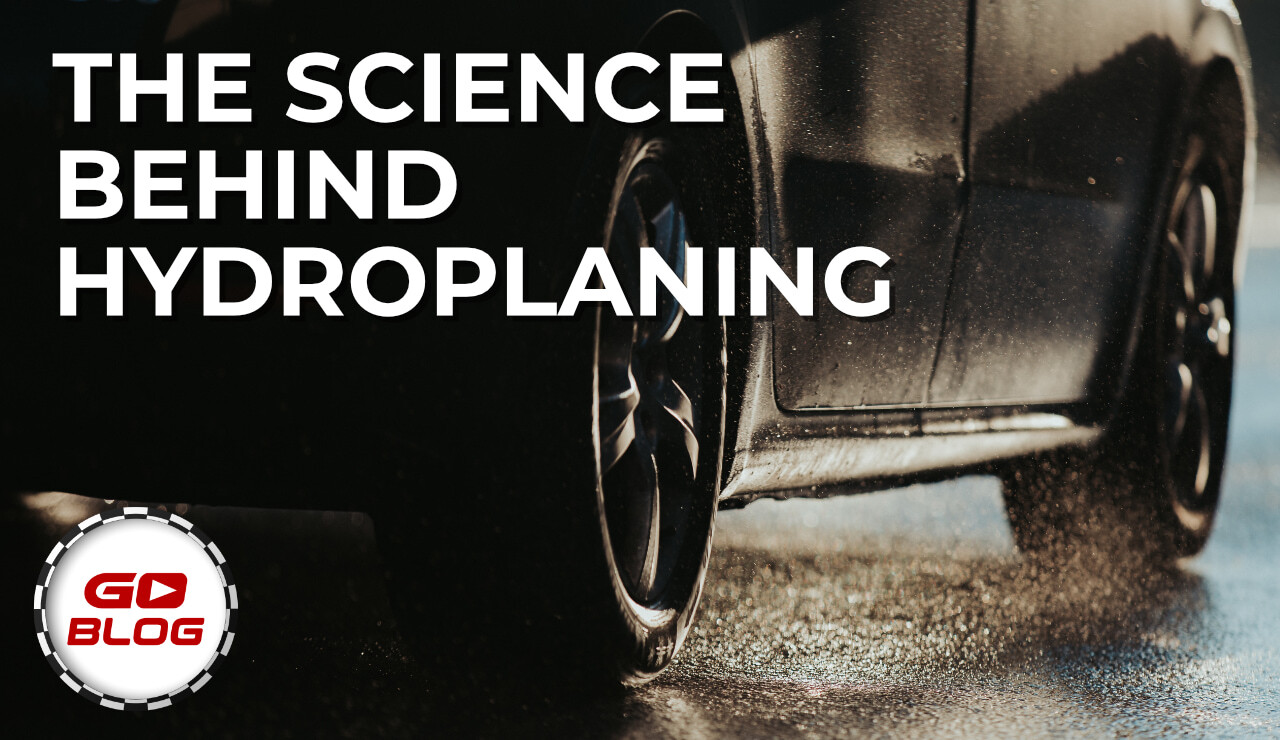The Science Behind Hydroplaning and How to Prevent It
Posted by WheelSetGo on 30th Jul 2024

The Science Behind Hydroplaning and How to Prevent It
Driving in wet conditions can be perilous, particularly when hydroplaning comes into play. Hydroplaning occurs when a layer of water builds between the vehicle's tires and the road surface, causing a loss of traction that can lead to a dangerous lack of control. Understanding the science behind hydroplaning, its risks, and how to choose the right tires can help drivers stay safe during rainy weather.
What is Hydroplaning?
Hydroplaning, or aquaplaning, happens when a vehicle's tires encounter more water than they can scatter. As tires move over the water, the pressure in the front of the tire pushes water underneath, creating a thin layer of water between the tire and the road. This layer separates the tires from the road, leading to a significant reduction in traction.

Three main factors contribute to hydroplaning:
- Water Depth: Even a small amount of water can cause hydroplaning if the vehicle is traveling fast enough. The deeper the water, the more likely hydroplaning will occur.
- Tire Condition: Worn-out tires with shallow tread depths cannot channel water away efficiently, increasing the risk of hydroplaning.
- Vehicle Speed: Higher speeds reduce the tires' ability to scatter water, making hydroplaning more likely.
The Dangers of Hydroplaning
Hydroplaning is dangerous because it effectively disconnects the driver from the road, making steering, braking, and accelerating unresponsive. This loss of control can lead to:
- Skidding: The vehicle may skid or slide, causing it to veer off the road or into other lanes.
- Collisions: Lack of control increases the risk of collisions with other vehicles, pedestrians, or obstacles.
- Spin-outs: In severe cases, the vehicle can spin, leading to a complete loss of directional control.
How to Choose Tires to Prevent Hydroplaning
Selecting the right tires is crucial in preventing hydroplaning. Here are key features to consider:
- Tread Depth: Tires with deeper treads can channel water more effectively. Regularly check your tire tread depth and replace tires when they become too worn. The U.S. Department of Transportation recommends replacing tires when the tread depth reaches 2/32 of an inch.
- Tread Pattern: Modern tire designs feature patterns that are specifically engineered to disperse water. Tires with wide grooves and channels are better at pushing water away from the tire surface, maintaining contact with the road.
- Tire Composition: The rubber compound used in tire manufacturing also plays a role. Softer rubber compounds tend to provide better grip in wet conditions but may wear out faster. Choosing tires designed for wet weather performance can enhance traction.
- Proper Inflation: Keeping your tires properly inflated ensures optimal contact with the road. Under-inflated tires have a smaller footprint and cannot channel water as effectively, increasing the risk of hydroplaning.

Additional Tips to Prevent Hydroplaning
Beyond choosing the right tires, there are other strategies to reduce the risk of hydroplaning:
- Reduce Speed: Slowing down in wet conditions gives your tires more time to scatter water and maintain traction.
- Avoid Standing Water: Try to drive in the tracks of the vehicle ahead of you, where water is less likely to be standing.
- Avoid Sudden Movements: Gentle steering, braking, and accelerating can help maintain traction.
- Maintain Your Vehicle: Ensure that your vehicle's brakes, suspension, and alignment are in good condition, as these factors influence tire performance.
Wrapping Up
Hydroplaning is a serious hazard that every driver should understand. By recognizing the conditions that lead to hydroplaning and taking steps to mitigate these risks, drivers can maintain better control during wet weather. Choosing tires with deep, well-designed treads, maintaining proper tire pressure, and adopting safe driving practices are all effective strategies to prevent hydroplaning.
At WheelSetGo, we offer a wide selection of high-quality tires designed to enhance your vehicle's performance and safety in wet conditions. Don't let wet weather catch you off guard. Contact us today at 320-247-6160 for personalized advice and recommendations on the best tires for your needs. Stay safe on the roads by staying informed and prepared for wet driving conditions with WheelSetGo.
